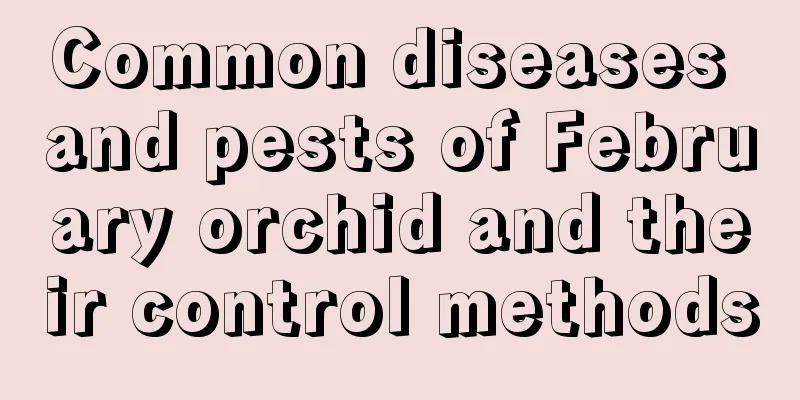Common diseases and pests of February orchid and their control methods

February orchid diseasesymptomDowny mildew often occurs on the lower leaves of February orchid, especially in April when the weather is warm and humid, making it easier for the plants to become infected. When the disease occurs, irregular yellow-green spots will appear on the leaves, followed by a white downy mildew layer on the back of the spots, causing the stems and leaves to become swollen and the mosaic leaves to become deformed. Prevention and treatment methodsAppropriately control the planting density, ensure ventilation and light transmission, and prune in time when the density is high. Keep it dry during maintenance. Excessive humidity can easily cause fungal infection. Spray the pesticide in time when the disease occurs. You can choose metalaxyl mancozeb wettable powder, Guoguang, etc. Spray once every 7 to 10 days and use it continuously for 2 to 3 times. February orchid pestssymptomAphids are definitely the most troublesome problem for February orchids. Once they are infected, the leaves and flowers are densely covered with them. It is disgusting to look at, not to mention eating! In the later stage, aphids suck the sap and leave wounds on the leaves, which will infect other diseases. One chain after another, the condition becomes increasingly serious until the plant dies. More importantly, aphids come in different sizes, and some cannot be seen at all if you don’t observe carefully. If the environment is slightly hot and uncomfortable, aphids will be attracted, and it is difficult to prevent them. Prevention and treatment methodsMethod 1: Citrus water. February cymbidium is edible. The easiest way is to spray it with pollution-free pesticides. Soak the orange peel in a sealed container for a few hours, then spray it directly. Pay attention to cleaning between the leaves and branches. After spraying thoroughly, spray the back of the leaves. Spraying 2 to 3 times will be effective, which is both environmentally friendly and eliminates pests. Method 2: If the aphids are stubborn, you have no choice but to spray pesticides. The February orchid in your home can be moved outdoors, sprayed with medicine, and then moved back indoors after it dries. The commonly chosen medicines include Huhuashen, or people can choose on their own in the store. |
<<: Common pests of delphinium and their control methods
>>: Canna Pests and Control Methods
Recommend
When is the best time to harvest carrots?
Carrot harvest time Carrots are sown in different...
Video of hydroponic Chlorophytum: It grows better in water than in soil, and takes root very quickly
Hydroponic Chlorophytum Video Method of hydroponi...
The meaning and symbol of baby's breath
1. Really like it Gypsophila paniculata is a very...
The growth environment and characteristics of Jade Dew
Jade dew growth environment conditions and requir...
Fig yield per mu profit
The prospects for fig cultivation are very good. ...
Why can't osmanthus trees be planted at home? Can osmanthus trees be planted at home?
Can I plant an osmanthus tree at home? You can pl...
How to keep the fortune tree in the house through the winter? Can it be watered with ferrous sulfate water?
1. How to keep them at home during the winter 1. ...
Causes and treatments for yellow leaves of Kalanchoe
1. Excessive watering 1. Reason: Excessive wateri...
How to use potassium dihydrogen phosphate to make flowers grow well (how to fertilize flowers at home)
Potassium dihydrogen phosphate is a phosphorus-po...
How to grow catharanthus in winter? Can it be propagated by cuttings?
1. How to keep it in winter 1. Temperature: It li...
Can honeysuckle be grown hydroponically?
Can honeysuckle be grown hydroponically? Honeysuc...
How to grow vinca roseus
Soil requirements Catharanthus roseus is native t...
Is the yield of litchi high? What is the yield per mu?
Is the lychee yield high? The yield of litchi is ...
Where do fruit seeds come from?
Where do fruit seeds come from? Naked ferns are t...
Is it good Feng Shui to keep water bamboo at home?
Placement Entrance Water bamboo is a kind of aqua...









